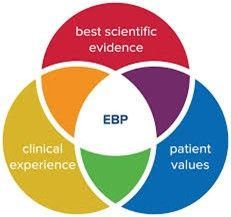7 Guiding Principles of Assessing Youths
Assessment is both an art and science in clinical work. Without a proper assessment, the rest of the clinical process suffers due to a lack of understanding of the client’s needs. And with today’s demands for shorter times to conduct an evaluation, the clinician has more challenges to create an assessment. Here are 7 guiding principles that provide a foundation for the assessment process.
1. Joining is Critical to the Assessment. The clinician needs to engage the client in a manner that helps them feel comfortable, at ease, not being judged. Rapport, relationships, or connection with a client mean more than the words received in an evaluation. Being with the client in the process, not against them (no matter what their history tells you) gives both of you a chance to move forward.
2. Be Curious. A client presents you with problems that they don’t have the perspective to see themselves. Being nosy, interested in their life and history shows you care about them and that opening up to new possibilities can lead to change.
3. Think Assessment All the Time. Most clinicians see assessment only as the beginning phase of treatment. Yet at each session, more opportunities exist to learn more about the client. In the first few sessions, they may not want to divulge everything; asking them more evaluation questions after a few weeks or a month may lead to more information to use in treatment.
4. Assessment = Intervention. When a clinician talks about patterns or problems in the session, the client may see the world differently. Talking about how problems have been handled in the past or suggesting future strategies helps the clinician see how the client responds to these ideas. Their acceptance or rejection of these approaches provides knowledge to the assessment process.
5. Assess for Strengths. Assessments tend to be about what’s wrong with a client. For example, a client may leave their seat 50% of their class, which is a problem. But the other 50% don’t, which means they engage in some behavior or like a subject that keeps their attention. These strengths can be built on for treatment goals.
6. Assessment Includes the Therapist. When meeting with a client, the clinician has to check themselves, too. Does the client bring up transference issues, feelings, and other “vibes?” Does the clinician feel restless or irritable in the client’s presence, and do others feel the same way?
7. Assess Using Multiple Perspectives. Not only should you be using your information, but that from family, other professionals such as teachers, or social workers. Observation, questionnaires, and other evaluation tools give you a total picture of the problem.
The assessment is to be a comprehensive process, but only a process that continues throughout the treatment of the client.
Praxes offers a course in the Assessment of Children and Adolescents. For more information about our training courses, please contact us.




